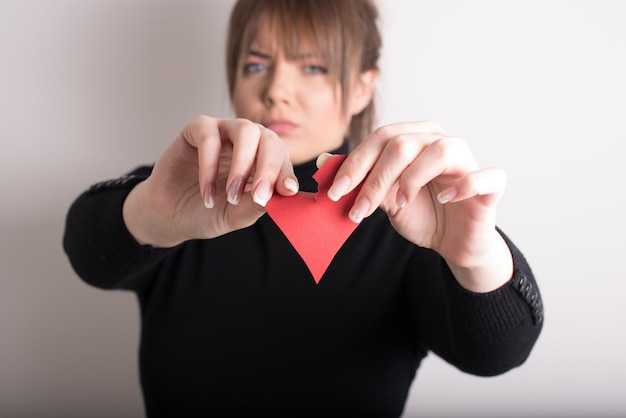When you enter a period of silence with someone who has pulled away, you confront one of the most misunderstood realities in modern relationships. Many assume that by simply withdrawing, the other person will feel the ache of absence, recognize what they lost, and rush back. Reality rarely unfolds that way—especially with an avoidant-dismissive partner. The truth is more precise, more psychologically charged, and it demands a resilience many are unwilling to cultivate. No-contact is not a passive waiting game. It is a mirror. It reflects your fears, your attachment patterns, your sense of worth. And the person who emerges on the other side of that silence is not the same person who stepped into it.
At the beginning, when you stop contacting someone you love, every instinct pushes against that choice. Pain, restless anxiety, and a nagging sense of undone business rise up. Your mind churns with questions: Do they miss me? Are they thinking about us? Will they reach out again? These are not idle curiosities; they are your attachment system trying to regain control and the security you’ve temporarily lost. But here’s the hard truth: the urge to control is precisely what pushed them away. The avoidant-dismissive doesn’t flee because they feel nothing. They step back because they feel too much and lack a map for handling it. Their attachment strategy balances a craving for closeness with a fear of it. Often, from childhood, they learned emotional reliance was dangerous—that needing someone meant surrendering control, and vulnerability invited rejection or manipulation. So they erected a fortress of independence. Every attempt to breach that wall makes them retreat further inside.
When you go silent, you are not punishing them; you are simply exiting the push-and-pull choreography. That is the first move toward reclaiming your power. While they may appear calm, detached, or indifferent during the absence, something else is happening beneath the surface. They are holding their ground. They believe distance restores their emotional equilibrium. At first, relief can feel real: the noise is gone, the emotional pressure lifts, their space seems intact and independence restored. But silence has an echo. Days pass, and the stillness that once felt peaceful begins to feel hollow. The energy you used to supply—the warmth, the reassuring check-ins, the emotional stability—is gone. You were often the one who made them feel wanted without demanding change; the one who reached across the gap and filled it. Without that presence, an unease creeps in: the absence of you is a strange void.
An avoidant-dismissive person will rarely admit this—even to themselves. They’ll rationalize that they’re fine, that they’ve moved on, or that solitude suits them. Yet beneath those narratives, a quiet question surfaces: why didn’t they reach out? Initially the question may be fueled by pride or curiosity, but over time curiosity becomes awareness. They notice the small moments where your presence was once a steadying check-in, a laugh, a calm center—and now those spaces are empty. Cracks begin to appear in their armor.
Here’s the piece most people miss: if you come back too quickly or you return with the same anxious energy that once chased them, those cracks will seal right back up. It is not your words that drove them away; it is the emotional need behind the words. Avoidant-dismissive people are intensely sensitive to pressure. Even a seemingly measured message that vibrates with a plea for reassurance registers as a pull toward commitment—and commitment feels suffocating. They interpret such need as a threat to their autonomy, triggering defenses and another withdrawal. You end up exactly where you started: waiting, hoping, wounded.
No-contact is not meant to make them chase you. It’s meant to change you. It is a crucible where your attachment wounds are either burned away or polished. Each silent moment is an opportunity to rebuild the foundation that cracked inside you. You begin to see how much your self-worth was tied to their responses and how much of you equated love with proving your value. You start to disentangle your peace from their attention. When that shift happens, the dynamic shifts too: your orbit stops being centered on them, and your emotional gravity returns to you. You no longer need their validation to feel secure. That change does not go unnoticed. Humans—avoidant ones included—are hypersensitive to emotional energy. When you stop chasing and stop needing, you start living in a different register. That creates a subtle ripple. The anxious partner you once were transforms into someone who embodies calm—and that calm is what they were searching for through distance.
This is the paradox of the avoidant-dismissive: they long for emotional safety but seek it by creating separation. When they encounter someone who is emotionally self-contained, not demanding but offering peace, they are unconsciously drawn back. They won’t declare it or return in grand gestures at once. Instead they reappear in small ways: a random message, a casual comment, a tentative attempt to reconnect—tests to see if your energy has changed and if they can approach without losing themselves. Most people fail at this test by misreading these tentative moves as total reconciliation and immediately overinvesting. True attraction requires restraint. It isn’t about saying something clever; it’s about holding the calm they can’t find within themselves. That quiet competence is magnetic.
Avoidant-dismissive people don’t trust words; they are drawn to energy—especially the energy that doesn’t require them. When your silence becomes self-sufficient, they feel it. It awakens in them an awareness of maturity, stability, and strength—qualities they secretly crave. That recognition is unfamiliar yet compelling because, deep down, they want a love that doesn’t force them to surrender their identity.
No-contact is not a countdown to reconciliation; it is a rebirth. It’s time spent learning to live without emotional dependence, to stop trying to control outcomes, and to reclaim inner power you once reflected through them. As you shift, the power dynamic changes: you are no longer on the edge, waiting for their return—you decide whether you want them at all. Few embrace that truth. No-contact guarantees transformation, not reunion. The person who truly changes is you. When you stop chasing, you reclaim something invaluable—your peace, your self-worth, your ability to stand alone. Ironically, this is precisely when the avoidant person often feels drawn back. They sense your distance, but this time it is different: not punitive silence but composed strength. They can feel the distinction between rejection that wounds their pride and release that arouses curiosity. Curiosity becomes the seed of attraction again.
If you can sustain this peace without trying to impress or convince them, you permanently tilt the balance. They might come back. They might not. But you will no longer be trapped in a loop of seeking approval from someone afraid of intimacy. You will learn the real purpose of no-contact: not to force pursuit but to stop pursuing the version of yourself that needs someone else to feel whole. Once that insight lands, everything shifts. You stop fearing their silence. You stop interpreting distance as indictment. You begin to see their withdrawal as a reflection of their internal walls, not of your value. You rise above the old dynamic and become untouchable in the best sense—centered and whole. Whether they return or not, you have already won.
Where most people fail is in the moment of weakness after weeks or months of holding fast. A single small message—sparked by a social post, a song, loneliness, or a memory—can topple all you rebuilt. A casual “Hey, how are you?” often undoes progress because it’s not sent from peace but from fear. Avoidants sense that fear before you hit send. The problem isn’t reaching out; the problem is why you reach out. If your aim is to ease your anxiety, your energy betrays you. The avoidant reads emotional cues before the words: a subtle urgency, an implicit plea for reassurance. To them, it feels like emotional entrapment, and their instinct is to withdraw. Most people misread avoidants as unfeeling, when in fact they are hypersensitive to emotional pressure; they equate love with loss of control. When your energy says, “I need you to make me feel okay,” it reminds them of what they’ve spent a lifetime avoiding.
If you genuinely want to attract the attention of an avoidant-dismissive person, the first skill to master is neutral emotional energy. Your contact, when it happens, must not come from a place of emptiness but from fullness. Become so internally steady that whether they respond or not does not disturb your equilibrium. Until you reach that point, your energy will keep reaching for them. Emotional reaching pushes them away. Think of the relationship as an invisible emotional field between two people. When you’re anxious, that field trembles with tension and noise; even at a subconscious level, the avoidant experiences that vibration as chaos. When you detach, the field calms, and for the first time they can approach without fearing they will be pulled into emotional turbulence. The paradox of attraction is real: the less you try to pull them in, the more space you give them to choose you freely.
No-contact is not punishment; it’s an energetic reset that breaks the old chase-withdraw rhythm. But that reset only works if you use it to create something new within yourself. Many pass the time in silence by waiting, obsessively checking their phone, replaying memories, counting the days. That is not healing; that is hibernation. Real detachment happens when you live again—when you make meaning outside the relationship. You learn that your energy matters and that your presence is a gift, not something to be recklessly offered to someone unprepared to keep it. When you arrive at that place, everything about you changes: your speech, your movement, the weight behind your silence. You become calm, radiating quiet assurance. Whether they admit it or not, they feel it, because avoidant defenses are calibrated to resist pressure, not peace. They know how to weather storms of emotion, but not how to handle someone who is quietly strong. That shift in energy draws them back. Not because of manipulative tactics, but because of your genuine transformation.
You don’t try to crack their code or fix them. You simply live from your own stability. That flips the emotional script: their presence no longer triggers panic about losing themselves. It becomes something safe to explore. As you embody calm independence, the avoidant begins to feel that being close no longer equals losing autonomy. This may cause them to inch toward you—tentative, experimental gestures of curiosity. By that time, you are different: no longer desperate for validation, not waiting for a specific outcome. That is the freedom point. The lesson of no-contact was never to make them chase you; it was to stop chasing a version of yourself that needed external proof to feel complete. When you embrace that, everything changes: you cease to fear silence, you stop decoding distance as rejection, and you see it for what it is—an expression of their internal walls, not your worth.
Many want to skip this work and jump straight to a happy reunion. They hope the avoidant will return without requiring inner development. Love doesn’t operate like that. Lasting connection requires two people who are emotionally whole. Safety comes from walking through the fire of separation, not dodging it. When you stand in peace, untouched by silence and unbound by fear, you radiate what few people possess: emotional stability. It is the quiet confidence that says, “I am fine whether you stay or go.” That energy transforms every future relationship. You will stop chasing attention because you recognize that relationship founded on fear is dependence, not connection. You will no longer settle for lukewarm affection because you have tasted the completeness of your own company. In that calm you will begin to see love differently: not as a prize to be won but as a mutual sharing. You stop chasing intensity and seek reciprocity. You stop confusing silence with punishment and see it as space for clarity.
If the avoidant returns, they will meet someone changed. The old pattern—your frantic energy toward them and their reflex to withdraw—no longer holds. The emotional plateau has shifted. You are the quiet they unknowingly pursued in distance. They recognize that proximity now does not threaten their autonomy. So they test, slowly: a like on an old post, a neutral message, a check of your reaction. They don’t seek wordy proof; they feel your energy. If you do not respond with prior urgency and remain steady and gentle, you dismantle the story they constructed about you. You are no longer the person who chased them or who they could control. That transformation is what truly attracts: not your silence per se, but the strength it forged.
Realign your motivation. This process is not about proving your worth to someone else—it is about living it. When you operate from inner peace, you stop trying to be chosen because you’ve already chosen yourself. That is the emotional mastery that ends the chase for good. Once you no longer need them back, you begin to draw relationships that mirror the balance you now hold internally. Sometimes that includes the avoidant who fled, but if it does, the dynamic will be wholly different: you are not the same person who once sought validation; you are someone who can offer connection from a place of power rather than fear.
When the time comes to communicate again, you won’t reach for reassurance or respond with frantic hope. You will respond with calm curiosity. And whether it leads to reunion or not, you will remain free. The final truth about re-attracting an avoidant-dismissive partner after a period of silence is there is no secret trick. It is an inward journey to such a wholeness that love becomes a choice rather than a survival tactic. That kind of love never needs to be chased because it already lives in peace.
If there is one takeaway to hold close: no-contact is not about absence; it’s about presence—an inner presence you cultivate. When you stop trying to control love and begin to embody it, when peace is nonnegotiable, relationships stop being battlegrounds and start reflecting the calm, rooted energy you hold. Everything that silence brought—the confusion, the pain, the distance—was never meant to break you. It was meant to build you. It was life’s way of removing the noise until you could finally hear yourself. And when you do, you discover the quiet power of emotional freedom that no one, not even the person who once wounded you most, can take away. So whether they return or not, you have already won: your victory is in not losing yourself again. The truth about re-attracting an avoidant-dismissive person after no-contact is not a formula; it’s a transformation. You become whole enough that love is an option, not a necessity—and that is the kind of love that never requires pursuit because it already rests in peace.


 The TRUTH About Re-Attracting a Dismissive Avoidant After No Contact | Jordan Peterson">
The TRUTH About Re-Attracting a Dismissive Avoidant After No Contact | Jordan Peterson">

 Why You Always Feel Invisible & Get Talked Over — And How to Stop It">
Why You Always Feel Invisible & Get Talked Over — And How to Stop It">
 Why Traumatized People Can’t See RED FLAGS (4-video compilation)">
Why Traumatized People Can’t See RED FLAGS (4-video compilation)">
 “Cool-Girl-ism,” Magical Thinking and Limerence Keep You ALONE">
“Cool-Girl-ism,” Magical Thinking and Limerence Keep You ALONE">
 When Avoidants Realize You Don’t Care Anymore пїЅпїЅ The Ultimate Power Shift">
When Avoidants Realize You Don’t Care Anymore �� The Ultimate Power Shift">
 Do you need a WIFE Translator?">
Do you need a WIFE Translator?">
 These 12 ‘Normal’ Traits Are Actually Childhood Survival Mechanisms">
These 12 ‘Normal’ Traits Are Actually Childhood Survival Mechanisms">
 5 Signs it’s a Trauma Bond, not Love">
5 Signs it’s a Trauma Bond, not Love">
 Yes, Anger Can Be Healthy But NOT Like This (4-Video Compilation)">
Yes, Anger Can Be Healthy But NOT Like This (4-Video Compilation)">
 My First Counseling Experience. (Funny)">
My First Counseling Experience. (Funny)">
 How to Know an Avoidant Regrets Losing You Without Needing to Ask | Mel Robbins motivational">
How to Know an Avoidant Regrets Losing You Without Needing to Ask | Mel Robbins motivational">